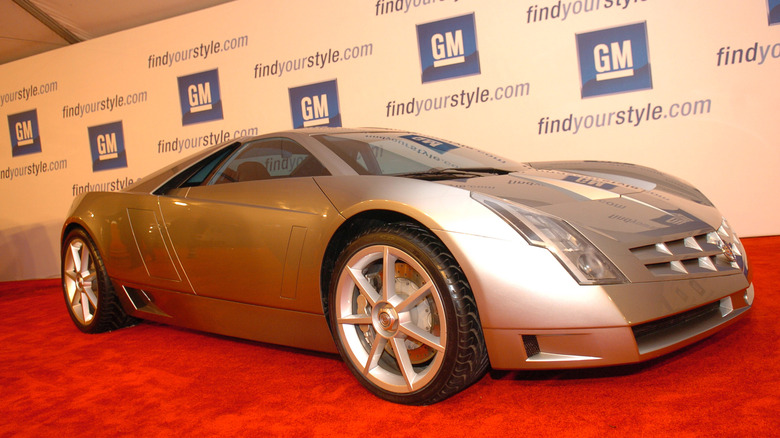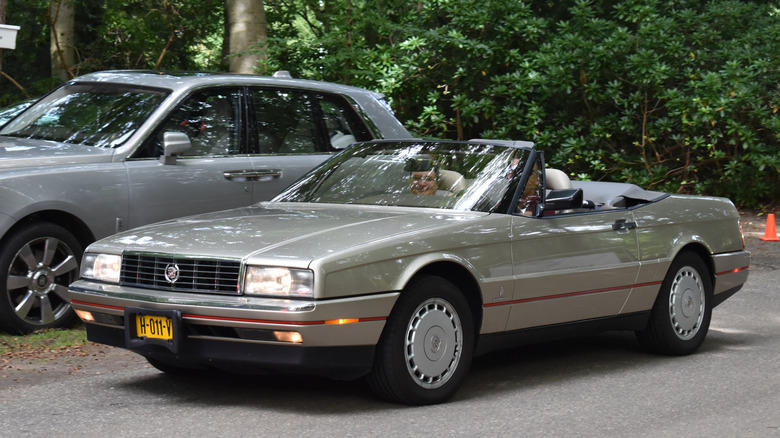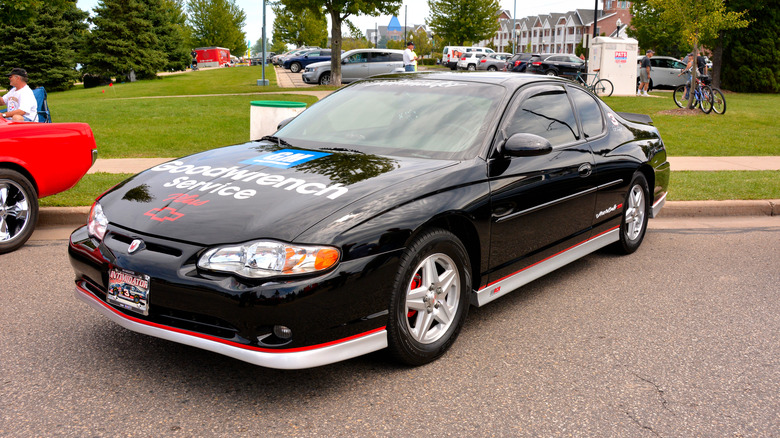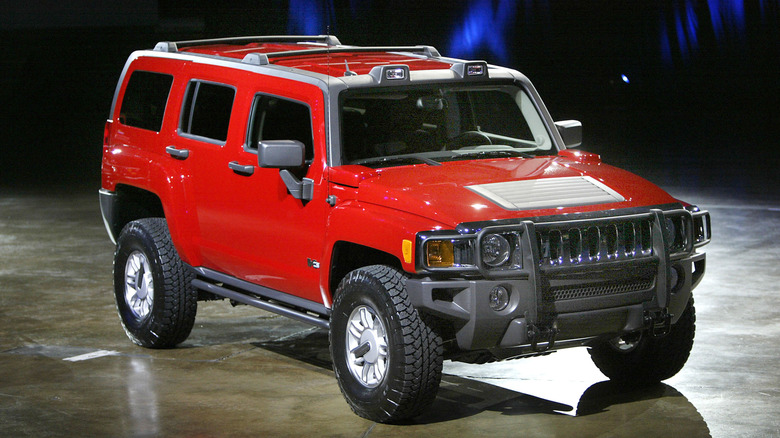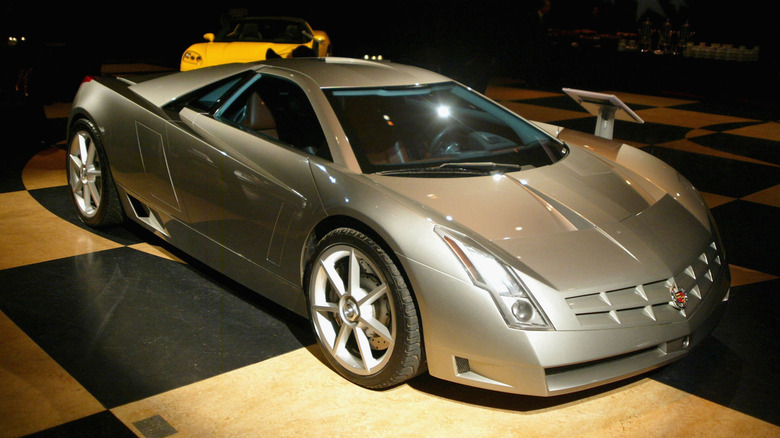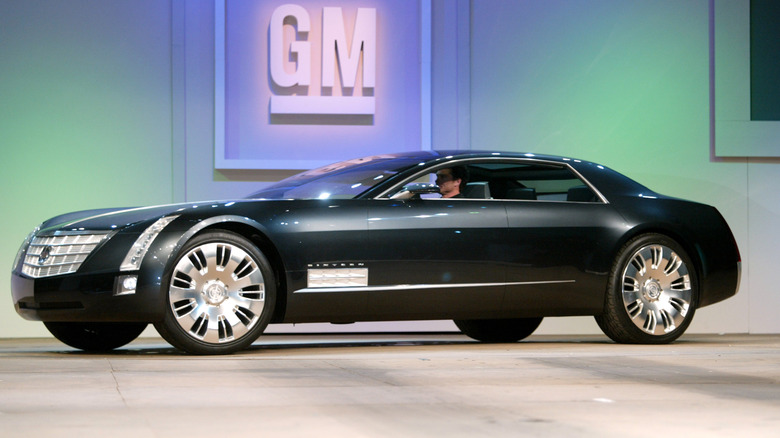7 Of The Most Bizarre General Motors Engines Ever Built
General Motors can trace its roots all the way back to the late 1800s and a company that built horse-drawn carriages in Flint, Michigan. Then, in the early 1900s, Billy Durant propelled the automaker Buick to prominence, and with his experience in the carriage industry, he ultimately founded General Motors in 1908.
Since then, General Motors has become one of the largest automobile manufacturers in the world, and it's still going strong today with multiple brands, types of cars, and powertrain options. Electric, hybrid, V6, V8 — GM just about has it all.
From 1908 to the present, General Motors has built all sorts of automotive engines. It is best known for its small block V8, commonly known as the LS. While this is the one that gets all the attention and love, GM has also made a fair share of strange and unorthodox powertrains that have slipped completely under the radar.
Northstar V8
With modern engines and modern engine technology, the Northstar V8 looks pretty tame. But, back in the early 1990s, when the Northstar first made its debut, it was quite unorthodox by General Motors standards. While the small block V8 still used pushrods and had only two valves per cylinder, the Northstar V8 had four valves per cylinder, dual overhead camshafts, and an all-aluminum block.
The initial run of Northstars was also designed to fit under the hood of FWD cars with transverse engine layouts, a layout that, of course, first appeared in the Northstar's first home: the wonderfully bizarre Cadillac Allante. For as forward-thinking as it was, the Northstar did have a few problems.
Early versions of the Northstar in the Cadillac Allantes were innovative but faced performance challenges, and by the time the engine had reached its potential, GM halted the Allante due to poor sales and market positioning, making it one of many Cadillacs that we all forgot about. Then there was the fact that, due to the Northstar's complexity and GM's love of saving costs by any means necessary, these engines were plagued with serious problems. Ever had to remove the intake manifold just to replace the starter motor? Then the Northstar is for you!
LS4 V8
Most of General Motors' modern small block V8 engines fall under the LS moniker, and we've seen countless muscle cars powered by this great family of engines. The LS1 is the most notable, displacing 5.7 liters and serving as the de facto powertrain for models like the C5 Corvette, various Camaros, and the earliest Pontiac GTOs. There was also the LS3, the LS7, the LSA, and the LSX. One member of the LS family, the LS4, stands out, and for a very peculiar reason.
On the face of it, the LS4 seems to be a fairly standard 5.3-liter naturally aspirated V8. Its party piece is that, much like the Northstar, the LS4 was designed for transverse engine applications. GM was undoubtedly the biggest purveyor of FWD cars with V8 engines, and this was the weapon of choice throughout the 2000s.
It wasn't used in many cars, appearing in models like the revived Impala SS and Monte Carlo SS, but regardless, it was an oddball. It is impressive that the engineers managed to slot a 5.3-liter V8 into a chassis with a transverse layout, but it ultimately led to torque steer and a driving experience that didn't exactly inspire confidence in drivers.
Vortec 4200
Ever since GM first got into the pickup truck and SUV business, we've seen GM's SUVs and trucks with just about every conceivable engine that you can think of — diesel, gas, I4, V6, V8, and just about everything else in between. One somewhat experimental powertrain that found a home in GM SUVs and has been long forgotten is the Vortec 4200.
While it was labeled the Vortec, it was actually part of the Atlas family. What made it unique was that it wasn't a V6 — it was an inline-six. Plus, the small fact that this was an I6 displacing 4.2 liters, whereas six-cylinder engines typically have a displacement starting with a three.
It used an all-aluminum block and had 24 valves in total (four per cylinder), producing a respectable 270 hp. This type of powertrain layout was unusual for both GM and the vehicles that it was installed in. It was also capable of handling a decent amount of tuning, and with a proper exhaust system, it sounds like an RB26. Interested? Then it's time to browse the classifieds for a GMT360 Chevy Trailblazer or, if you're lucky, a Saab 9-7x.
Oil crisis era V8 diesel
There is a very small chance that you might have possibly heard of the 1970s oil crisis. Skyrocketing fuel prices didn't bode well for the American car industry's love of the gas-guzzling engine, so every automaker scrambled to find a solution to this issue.
While the Japanese brands were steamrolling the American brands in terms of sales and fuel-efficient cars, somebody at General Motors had a great idea. The end result was GM's first-ever diesel V8 engine, which infamously powered the aptly named Oldsmobile Cutlass Diesel, as well as other full-size sedans from the GM catalog. This engine was based on an existing 5.7-liter V8 that ran on gas originally, and this went about as well as you'd expect. The most notable issue was that these engines were hideously, egregiously, hopelessly underpowered, taking some 20(!) seconds to reach 60 mph. To add insult to injury, it was also unreliable.
While GM's actual gas V8s didn't fare much better, putting out horsepower figures starting with 1 while their capacities started with 6, 7, or sometimes 8, they were all somewhat better than whatever this diesel was trying to do.
Atlas I5
When you think of five-cylinder engines, your mind probably immediately goes to Audi and Volvo. If you're a connoisseur of automotive oddities, you might think of the Acura Vigor or Fiat Coupe. What you might not know is that General Motors, of all companies, also produced a five-cylinder engine for a very short while. There are many reasons why car manufacturers don't make five-cylinders anymore, but here's another cool one that makes us think they should.
Based on the same engine family as the above-mentioned 4200 Vortec six-cylinder, the Atlas was a 3.5-liter inline five-cylinder engine. While we love the idea of a compact sports car with this engine as much as you do, the Atlas I5 never appeared in such a vehicle. Like other Atlas family members, this engine was designed for GM's SUVs and trucks.
One of its most notable applications is the Hummer H3, the smallest Hummer and the last model to be released by the brand before bankruptcy. Initially putting out 220 hp in the 3.5-liter versions, then rising to 247 for the 3.7-liter versions, the Atlas I5 is definitely one of the bigger curiosities in GM's history. It did have a major reliability issue with its cylinder head in the early versions, and it's the only mass-produced five-cylinder engine made in the United States to date.
Northstar V12
Yes, this almost happened. In the early 2000s, Cadillac revealed a concept car that was meant to be the brand's halo car. What's the best way to create a halo car? Why, a supercar, of course! The Cien was an absolutely stunning car, the ultimate expression of Cadillac's brand image and its quest to be taken seriously in the luxury car space.
One of the most notable aspects of the Cien was its engine. It wore the Northstar branding, but it wasn't a puny little V8, but rather a 7.5-liter V12. Despite the branding and the fact it was in a Cadillac vehicle, the Northstar V12 in the Cien was actually engineered by powertrain hall-of-famers Cosworth.
The XV12, as it was known, was capable of 750 hp. That power reached the Cien's rear wheels through a six-speed sequential transmission. It also featured a newfangled thing at the time called Displacement on Demand, which is actually what we know nowadays as cylinder deactivation. This would have been a brilliant halo car for Cadillac, but the brand simply couldn't justify the development cost for such a vehicle, similar to Chrysler and the ME-412. Ultimately, the Cien project was never greenlit, and it has remained a concept car.
V16
The last engine on here was also only ever seen on a concept car and nowhere else, and it's quite the special one. In 2003, Cadillac showed the world the Sixteen concept, a stunning road yacht that was inspired by Cadillacs of old but also one that showcased the brand's future intentions.
Sadly, the Sixteen never reached production either, but Cadillac went out of its way to build a fully functional prototype. Under the split hood of the Sixteen was, as the name implies, a V16 engine. Remember, this was a whole three years before the Bugatti Veyron hit the road.
This V16 displaced 13.6 liters and put out a massive 1,000 hp. Cadillac opted for the V16 not because of horsepower and performance but for its unrivaled smoothness. This engine was designed by Katech and was based on the existing LS architecture. Like the Cien, it also featured the Displacement on Demand technology. Obviously, the Sixteen was never planned for production despite what the rumor mills said, but can you just imagine a production version of a car this extravagant? The new Celestiq will have to do, then.
